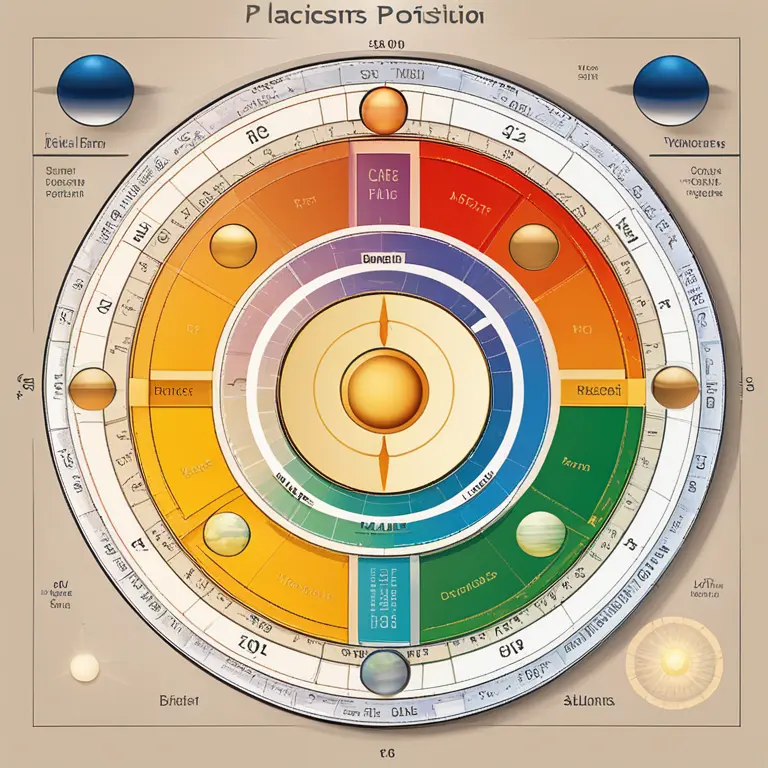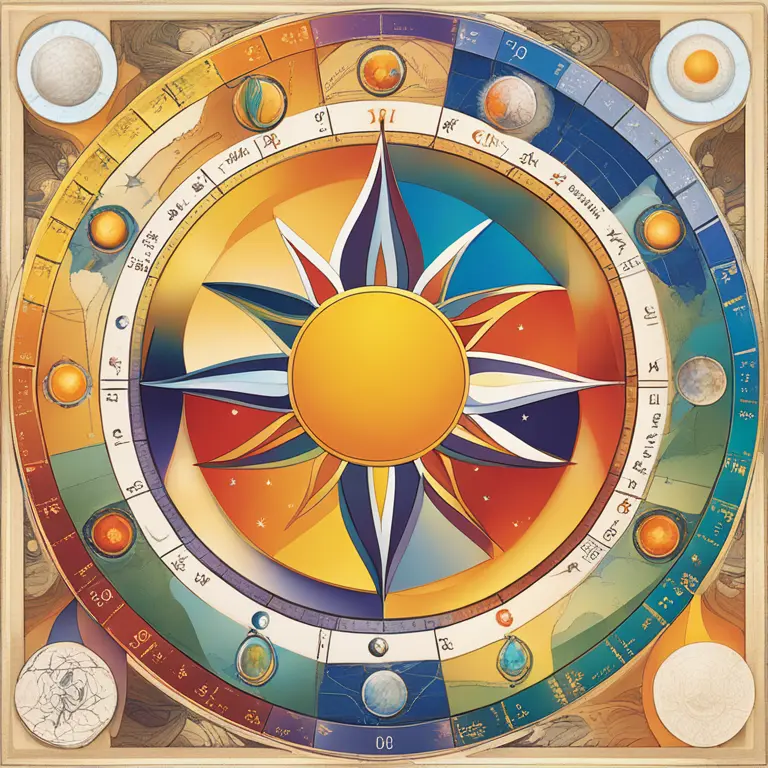
The Blueprint of Your Stars: Interpreting Your Birth Chart
Unravel the cosmic influences on your personality and life path with this beginner's guide to understanding your astrological birth chart.
article by Priya Deshmukh
Introduction to Astrology
Astrology is an ancient practice that believes the positions of celestial bodies at the time of our birth can define our personality traits, potential, life paths, and even predict future events. One of the fundamental tools in astrology is the birth chart, also known as a natal chart. It's a celestial snapshot of where all the planets were in their journey around the Sun at the exact moment you were born. In this article, we take you through the intricacies of a birth chart and how it might reflect upon your life.

Components of a Birth Chart
A birth chart is divided into 12 segments known as houses, each representing different aspects of life, such as career, family, relationships, and personal growth. The chart also includes the positions of the Sun, Moon, and planets, as well as astrological aspects that indicate how these celestial bodies interact with each other. Each component adds a layer of meaning and can offer insights into your personality and life experiences.

Significance of the Sun, Moon, and Rising Sign
Your Sun sign, often known as your zodiac sign, is a crucial element that illustrates your core being and ego. The Moon sign reveals your emotional interior and how you respond to life's ebb and flow. The Rising sign, or Ascendant, is the constellation that was ascending on the eastern horizon at your time of birth, acting as a mask, governing first impressions and your approach to new situations. These three are considered the principal components of your birth chart, providing a comprehensive overview of who you are.

Reading the Planetary Positions
Each planet's position in a birth chart has unique meanings and represents different parts of your personality. For instance, Mercury influences how you communicate, Venus is about love and beauty, Mars deals with drive and energy, and so forth. The houses they reside in further refine their meaning—Venus in the 7th house might indicate a harmonious love life, while Mars in the 10th could mean a career driven by ambition.

The Role of Astrological Aspects
Astrological aspects are angles the planets form with one another on your birth chart and they're pivotal to interpreting the chart. A square, for instance, represents a 90-degree angle and signifies conflict, while a trine, 120 degrees, denotes harmony. Understanding these aspects is essential for analyzing both the challenges and gifts present within your chart.
The Ever-Evolving Sky: Transits and Progressions
Your birth chart is not static; as planets continue to move after your birth, they form new aspects with the positions in your natal chart known as transits. Alongside these, progressions are another predictive technique where the day after your birth is treated as one year in your life, revealing a personal evolution. Both transits and progressions are methods astrologers use to forecast trends and events pertinent from 2024 onwards.
Conclusion: Your Chart's Influence
Although your chart can offer insights, it's important to remember that it indicates potential, not destiny. Free will plays a vital role, and while astrology can guide, you shape your own path. Whether you're a seasoned astrology enthusiast or new to this cosmic journey, delving into your birth chart can be an enlightening opportunity for self-discovery.
Published: 2/9/2024
Modified: 2/9/2024
More predictions
Come back here soon to learn more about yourself and your future


Tarot that Embodies Virgo
Discover which Tarot card aligns with the Virgo zodiac sign, revealing the intricate relationship between Tarot symbolism and astrological insight.


The Essence of Tarot Spreads: A Deep Dive into Their Significance
Discover the profound reasons behind the use of tarot spreads in readings and how they can guide you through life's complexities.


The Essence of Tarot Reading: Timely Insights for Your Path
Embark on a journey of self-discovery and foresight with the art of Tarot. This article sheds light on the timeless practice, offering guidance for those seeking life's answers.